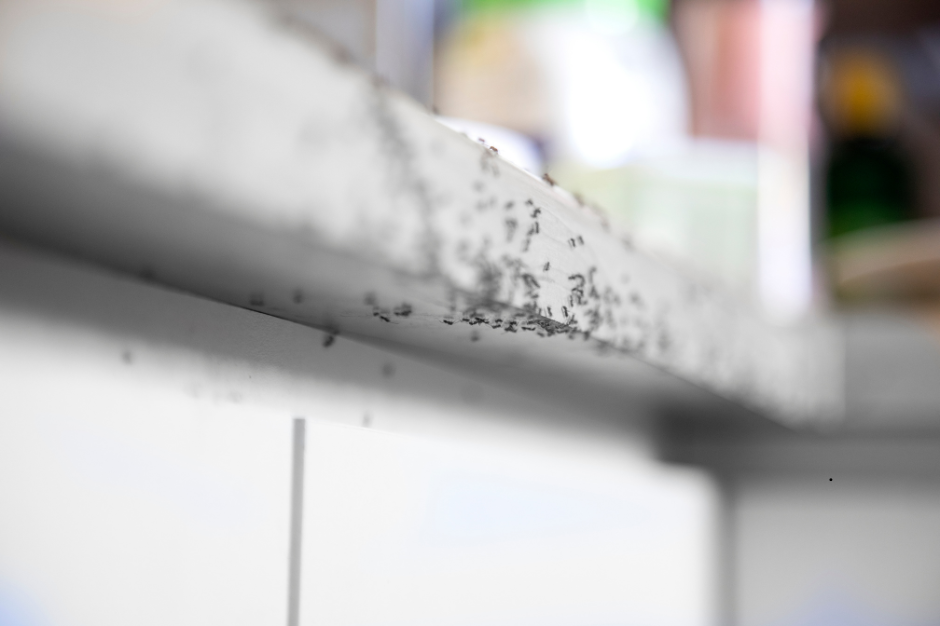How Many Calories Do You Burn in 1 Hour of House Cleaning?
How Many Calories Do You Burn in 1 Hour of House Cleaning? Insights from Sherwood Cleaning Services
Cleaning your home is not just about maintaining a tidy space; it can also serve as a significant workout. You can burn between 170 to 300 calories in just one hour of house cleaning, depending on your weight and the intensity of your efforts. This insight reveals how everyday chores can contribute to your overall health, making them more than just chores but opportunities for physical activity.
Different cleaning tasks yield different caloric burns. For example, light activities like dusting or organizing may burn around 70-100 calories in 30 minutes, while more strenuous tasks, such as scrubbing floors, can push that number even higher. Understanding these factors can help you incorporate cleaning into your fitness routine more effectively.
Moreover, integrating house cleaning into your exercise plan not only enhances your physical fitness but also brings various health benefits. From reducing stress to increasing your daily activity level, finding ways to maximize your calorie burn during these routine activities can lead to a healthier lifestyle.
Key Takeaways
- You burn between 170 to 300 calories per hour cleaning based on activity intensity.
- Different cleaning tasks result in varying calorie burns.
- House cleaning can improve your fitness and overall well-being.
Understanding Calorie Burn
To understand calorie burn during house cleaning, it’s essential to know what calories represent and the basics of how your body burns them during physical activities. This knowledge helps you gauge how effective your cleaning efforts are in terms of energy expenditure.
What Are Calories?
Calories are a unit of measurement that indicates the amount of energy food provides. When you consume food, your body converts it into energy, which fuels your daily activities, including house cleaning.
Every food item has a specific calorie count, influencing how much energy you can draw from it. For instance, a medium-sized apple has about 95 calories, while a chocolate bar can contain over 200 calories. Keeping track of your calorie intake and expenditure helps you manage your weight effectively.
Basics of Calorie Burning
Calorie burning occurs through various activities, including physical exercise and metabolic processes. Your body burns calories to maintain functions such as breathing and digestion as well as during specific activities like house cleaning.
The intensity of your cleaning tasks influences how many calories you burn. Here’s a quick breakdown:
- Light Cleaning (e.g., dusting): Burns approximately 70-100 calories per 30 minutes.
- Moderate Cleaning (e.g., vacuuming): Burns about 100-150 calories per 30 minutes.
- Heavy Cleaning (e.g., scrubbing floors): Can burn 150-200+ calories per 30 minutes.
By understanding this, you can better estimate how much energy you expend during a cleaning session.
Factors Influencing Caloric Burn During House Cleaning
Several factors affect how many calories you burn while cleaning your home. Understanding these will help you determine the intensity of your efforts.
1. Body Weight
Your weight significantly impacts caloric burn. Generally, heavier individuals burn more calories than lighter ones during physical activities, including cleaning.
2. Activity Intensity
The type and intensity of the cleaning tasks you undertake matter. For example:
- Light Cleaning (e.g., dusting, organizing): Burns 70-100 calories per 30 minutes.
- Moderate Cleaning (e.g., vacuuming, mopping): Burns 100-150 calories per 30 minutes.
- Heavy Cleaning (e.g., scrubbing, moving furniture): Burns 150-200+ calories per 30 minutes.
3. Duration of Activity
The longer you clean, the more calories you burn. For example, a person weighing 155 pounds can burn approximately 150 calories in 30 minutes of moderate cleaning.
4. Movements and Techniques
Incorporating more dynamic movements, like lunges while vacuuming, can increase calorie burn. Engaging multiple muscle groups will enhance the workout effect.
5. Efficiency of Movement
Your cleaning technique plays a role. More efficient, vigorous movements typically lead to higher caloric expenditure compared to slower, more deliberate actions.
Calculating Calories Burned
Understanding how to calculate the calories you burn during house cleaning can help you manage your energy expenditure and weight goals. Various factors contribute to this estimation, including the type of cleaning tasks and your body weight.
Use of Calorie Calculators
Calorie calculators can provide you with a personalized estimate of calories burned during house cleaning. These tools take into account your weight, the duration of the activity, and the intensity of the cleaning tasks.
For a more accurate calculation, consider using the formula:
Calories Burned = MET × T × W
where:
- MET (Metabolic Equivalent of Task) varies by activity.
- T is the time spent in hours.
- W is your weight in kilograms.
Many online calculators also allow you to input specific cleaning tasks, offering estimates based on the corresponding MET values, which range from light to vigorous intensity.
Average Calories Burned per Household Task
The calories burned can vary significantly depending on the household tasks you perform. Here's a breakdown of average calorie expenditures for common cleaning activities:
| TASK | CALORIES BURNED (per hour) |
|---|---|
| Vacuuming | 240-300 |
| Mopping | 240-330 |
| Dusting | 120-200 |
| Window Cleaning | 160-250 |
| Sweeping | 190-250 |
These estimates are influenced by factors such as your weight and the intensity of the task. For example, a more vigorous approach to vacuuming can substantially increase the total calories burned.
Maximizing Your Calorie Burn
To increase the calories you burn while house cleaning, consider incorporating fitness techniques and intensifying your cleaning activities. These strategies can make your routine more effective and rewarding.
Incorporating Fitness Techniques
Incorporating fitness techniques into your cleaning routine can significantly boost your calorie expenditure. Try using movements like lunges or squats while picking up items from the floor. These exercises engage multiple muscle groups and elevate your heart rate.
You can also use a pedometer or fitness tracker to monitor your steps. Aim for at least 10,000 steps during your cleaning session. You might be surprised at how moving with purpose adds up.
Consider adding short bursts of cardio as well. For instance, alternate 5 minutes of fast-paced vacuuming with 2 minutes of brisk walking around your home. This interval training approach helps maximize calorie burn while keeping your cleaning routine fresh and engaging.
Intensifying Cleaning Activities
To intensify your cleaning activities, focus on the speed and effort you put into each task. For example, dusting can become a mini workout when you move quickly and incorporate arm movements.
Use larger motions and engage your core while cleaning. When mopping or scrubbing, try using a side-to-side or up-and-down motion to engage more muscles.
Implementing techniques like these can make activities more vigorous and enhance your calorie burn. Additionally, consider pairing cleaning with loud music. Not only can it make the task enjoyable, but it can also motivate you to move faster.
Health Benefits of House Cleaning Apart from Calorie Burning
House cleaning offers several health benefits beyond just burning calories. Engaging in regular cleaning tasks can positively impact your physical and mental well-being.
Physical Health Benefits:
- Improved Cardiovascular Health: Consistent physical activity like cleaning can reduce your risk of heart disease.
- Strength and Flexibility: Activities such as vacuuming and scrubbing can strengthen muscles and improve flexibility.
Mental Health Benefits:
- Reduced Stress: A clean environment can decrease stress levels. The act of cleaning itself can serve as a form of mindfulness.
- Enhanced Mood: Completing household chores can promote a sense of accomplishment and improve your mood.
Cognitive Benefits:
- Better Focus: A tidy space can enhance concentration and productivity. Clutter can be distracting and diminish your ability to focus.
- Routine and Structure: Regular cleaning can create a sense of routine, which adds stability and predictability to your day.
Incorporating house cleaning into your routine can contribute to both physical fitness and improved mental health, making it an essential activity for overall well-being.
Making House Cleaning a Part of Your Fitness Regime
Integrating house cleaning into your fitness routine can make your chores more productive and beneficial for your health. With a structured approach, you can effectively burn calories while keeping your living space tidy.
Setting a Cleaning Routine
Establishing a consistent cleaning schedule can help you incorporate physical activity into your daily life. Aim to dedicate specific time slots each week to various tasks, such as vacuuming, mopping, or dusting.
For example, you might allocate:
- Monday: Kitchen cleaning (approx. 276 calories burned)
- Wednesday: Bathroom scrubbing (approx. 244 calories burned)
- Friday: Living room tidying (approx. 200 calories burned)
By timing these sessions for about 30 minutes to an hour, you turn cleaning into a purposeful workout. Performing cleaning tasks at a moderate to high intensity can help you increase your heart rate and maximize the calorie burn.
Tracking Your Progress
To stay motivated, consider tracking the calories burned from your cleaning activities. Utilize a fitness app or a simple log to record your sessions.
You could note:
- Type of chore
- Duration (in minutes)
- Calories estimated burned
Monitoring your efforts will not only show you how active you are but will also highlight your progress over time. As you consistently engage in house cleaning workouts, you may find yourself becoming stronger and more efficient. This practice reinforces the idea that maintaining a clean home can go hand-in-hand with a healthier lifestyle.
Safety Tips During House Cleaning Exercises
When engaging in house cleaning as a form of exercise, safety should be a priority. Follow these essential tips to minimize risks.
- Wear Appropriate Footwear: Use shoes with good support and grip. This prevents slipping and provides stability during movements.
- Use Proper Lifting Techniques: Bend at your knees, not your waist, when lifting heavy objects to protect your back.
- Stay Hydrated: Drink water before, during, and after cleaning. Staying hydrated helps maintain energy levels and prevents fatigue.
- Take Breaks: Schedule short breaks to rest. Continuous activity can lead to exhaustion or injuries.
- Use Tools Correctly: Familiarize yourself with cleaning equipment. Use vacuum cleaners, mops, and other tools as intended to avoid accidents.
- Avoid Overexertion: Listen to your body. If you feel tired or experience pain, stop and rest.
- Clear Your Path: Remove obstacles from your cleaning area. This reduces the risk of tripping or falling.
- Keep Cleaning Supplies Safe: Store chemicals and cleaners out of reach of children and pets. Use gloves and masks when handling strong products.
By implementing these safety measures, you can enjoy your cleaning routine while minimizing the risk of injuries. Prioritizing safety enhances your house cleaning experience.
Conclusion
Cleaning your home is an effective way to burn calories while staying active. The number of calories you burn varies based on factors such as your weight and the intensity of your cleaning.
Estimated Calories Burned During Common Cleaning Tasks
| Cleaning Activity | Calories Burned (per hour) |
|---|---|
| Sweeping | 200 |
| Mopping | 215 |
| Scrubbing Floors | 300 |
| Washing Dishes | 200 |
By integrating vigorous movements into your cleaning routine, you can increase your calorie burn. Adding exercises like squats or lunges while cleaning will enhance the benefits.
Engaging in regular cleaning can contribute to a healthier lifestyle. Consistency is key, and you may find it enjoyable to combine chores with physical activity. Incorporating cleaning into your weekly routine can help achieve your fitness goals while maintaining a tidy home.
Frequently Asked Questions
Understanding how calories are burned during house cleaning can help you gauge the physical effort involved. Various factors influence calorie expenditure, and certain cleaning activities may even qualify as a workout.
What factors influence the number of calories burned during an hour of house cleaning?
Several factors impact calorie burn, including your weight, age, gender, and metabolic rate. The type of cleaning activity you engage in also plays a crucial role in determining how many calories you burn.
Can regular household cleaning be considered a form of physical workout?
Yes, regular household cleaning can serve as a form of physical activity. Engaging in chores like vacuuming, mopping, or scrubbing activities elevates your heart rate and can contribute to overall physical fitness.
How does the intensity of house cleaning activities impact calorie expenditure?
The intensity of your cleaning tasks significantly affects the number of calories you burn. Light cleaning may burn fewer calories, while vigorous activities, such as scrubbing floors or moving furniture, can lead to higher calorie expenditure.
What are the top calorie-burning household chores?
Some of the top calorie-burning chores include scrubbing floors, vacuuming, and heavy lifting tasks like rearranging furniture. Depending on your weight and the activity's intensity, these activities can burn a substantial number of calories in an hour.
How can one increase calorie burning while performing routine cleaning tasks?
To enhance calorie burning during cleaning, you can increase your pace, incorporate more strenuous tasks, or add movements like squats or lunges. Using larger muscle groups and maintaining a steady rhythm can also contribute to greater calorie expenditure.
Is there a difference in calories burned between manual and machine-aided floor cleaning?
Yes, there is typically a difference. Manual cleaning tasks often require more physical effort and can burn more calories compared to machine-aided methods. For instance, scrubbing with a brush can engage your muscles more than simply using a vacuum.



